SECOND PLACE: Joel with 18 correct answers.
TIE for THIRD PLACE: Kelly & Cole with 17 correct answers (plus closest run-time to actual runtime broadcast).
by Mr. King
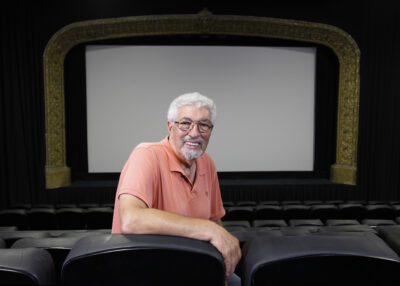
Robert Laemmle, former president of Laemmle Theatres, passed away on Thursday, January 9 in Santa Monica, California, at the age of 89. He is survived by his wife Michelle Laemmle and ex-wife Raquel Shantal, their children Yvonne Ascher & Leonard Laub, Michael & Haidee Ascher, David & Tammy Ascher, Greg & Tish Laemmle, Jessica Laemmle, Carri and Charlie Bisbee, Mitch & Debbie Needelman, Maitland Finley, and Robert Finley, and his sister Mimi Reisbaum and nephews Mark & Jay Reisbaum.
Bob was a kind, generous, happy person who adored his large family. He was also an entrepreneur and film industry trailblazer who lived a classic American immigrant success story. He was born on September 5, 1935 in Paris, France, to Max and Bertha Laemmle. Fleeing the Nazis, they brought him to the United States in 1938, and he lived in the Los Angeles area for the rest of his life. He was a gifted basketball player as a young man, earning All City honors out of Marshall High School during his senior year. He played college basketball at USC, L.A. City College and Cal State L.A. He graduated from Cal State Los Angeles in 1958, later receiving an MBA from UCLA in 1961.
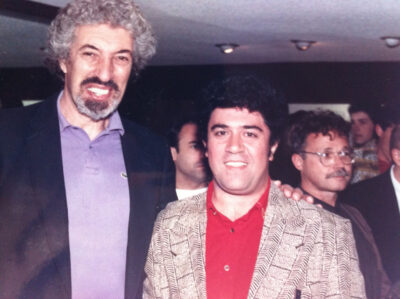
Founded in 1938 by Robert’s father Max and his uncle Kurt, Laemmle Theatres is a storied exhibitor of foreign and art films in Los Angeles. Bob began working for Laemmle Theatres in 1963 and was instrumental in the rapid expansion of the chain, which he ran until 2004, and ever since has been led by his son Greg. Bob helped redefine the image of an “art house,” programming and innovatively marketing films from around the world while creating brand-new venues for L.A. cinephiles, including the Sunset 5 in West Hollywood, the Monica Film Center in Santa Monica, the Playhouse 7 in Pasadena, the NoHo 7, and the Laemmle Glendale.
Bob was made a Chevalier des Arts et des Lettres, a distinction his father also earned. The highest arts-specific honor conferred by the French government, it is reserved for artists and people who have contributed to the influence of arts in France and throughout the world. It was a testament to the Laemmles’ commitment to and passion for showcasing the best films from around the globe.
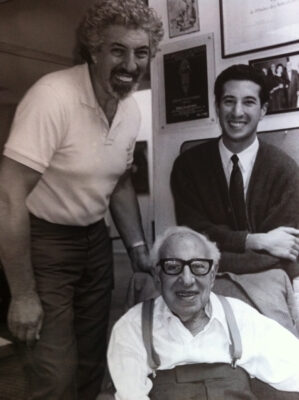
In 2000, the family established the Laemmle Charitable Foundation to give back to the community that has sustained the family business over the decades. Since then, the foundation has awarded over $2.3 million to locally based nonprofits with a focus on social and environmental giving. Past award recipients include Tree People, SOVA, L.A. Family Housing and Food Forward, along with many others.
Funeral services will be held on Monday, January 13 at 10:00 AM at Mount Sinai Memorial Park, located at 5950 Forest Lawn Drive. The family will be receiving visitors at their home in Santa Monica following the burial and will also have open hours in the days to follow.
Donations can be made to the Laemmle Charitable Foundation at www.laemmlefoundation.org or by check mailed to 11523 Santa Monica Boulevard, Los Angeles, CA 90025. Donations should also be made to local charities supporting fire relief efforts.
Recollections regarding Bob Laemmle and Laemmle Theatres are being collected and members of the public are invited to send comments below.
May his memory be for a blessing.
THE PRIME OF MISS JEAN BRODIE (1969)
55th Anniversary Screening
Tribute to Oscar Winner Maggie Smith
Wednesday, November 13, at 7 PM
Laemmle Royal Theatre
Laemmle Theatres and the Anniversary Classics Series present a tribute to the late, great Maggie Smith with a screening of her first Oscar-winning movie, ‘The Prime of Miss Jean Brodie.’ Smith had impressive competition in 1969, including Jane Fonda, Liza Minnelli, Genevieve Bujold, and Jean Simmons, but she prevailed. The film also earned an Oscar nomination for the theme song, “Jean,” written by Rod McKuen.
Jay Presson Allen adapted the highly acclaimed novel by Muriel Spark about an eccentric but popular teacher at a girls’ school in Edinburgh during the 1930s. Ronald Neame (‘The Horse’s Mouth,’ ‘Tunes of Glory,’ ‘The Poseidon Adventure’) directed. The cast includes Robert Stephens (Smith’s husband at the time), Pamela Franklin, Jane Carr, Gordon Jackson, and Celia Johnson, an Oscar nominee two decades earlier for her role in the romantic classic, ‘Brief Encounter.’
Allen had also written the successful play adapted from Spark’s novel; it starred Vanessa Redgrave in London and Zoe Caldwell on Broadway. But most critics agreed that Smith’s portrayal was definitive. She caught the charisma and eccentricity as well as the sometimes dangerous egotism of a revered teacher who steers some of her impressionable students in the wrong direction, even leading one of her charges to volunteer to fight for Franco during the Spanish Civil War.
Variety had high praise for “Maggie Smith’s tour-de-force performance.” Leonard Maltin called the film a “remarkable character study.” In the most detailed review, Pauline Kael wrote, “Maggie Smith, with her gift for mimicry and her talent for mannered comedy, makes Jean Brodie very funny—absurdly haughty, full of affectations, and with a jumble shop of a mind… a bit of an Auntie Mame.” Kael also had praise for the other performances, writing “The casting in general is superb,” and she singled out one supporting performance in particular: “Celia Johnson has a genuine triumph as Miss Mackay, who in the film becomes Miss Brodie’s true adversary.”
Maggie Smith earned a total of six Academy Award nominations over the course of her long career, winning a second Oscar in the supporting actress category for her performance in 1978’s ‘California Suite.’ She won a Tony award for her performance in Peter Shaffer’s ‘Lettice and Lovage’ on Broadway, and she snagged three Emmys for her role in the beloved ‘Downton Abbey.’
This Friday we’re so pleased to open Remembering Gene Wilder at the Royal in West L.A. and the Town Center in Encino. A loving tribute that celebrates the life and legacy of the comic genius behind an extraordinary string of film roles, from his first collaboration with Mel Brooks in The Producers, to the enigmatic title role in the original Willy Wonka and the Chocolate Factory, to his inspired on-screen partnership with Richard Pryor in movies like Silver Streak. It is illustrated by a bevy of touching and hilarious clips and outtakes, never-before-seen home movies, narration from Wilder’s audiobook memoir, and interviews with a roster of brilliant friends and collaborators like Mel Brooks, Alan Alda, and Carol Kane. Remembering Gene Wilder shines a light on an essential performer, writer, director, and all-around mensch.
We have several introductions and Q&As scheduled with executive producer Julie Nimoy, writer Glenn Kirschbaum, and Mr. Wilder’s widow Karen Wilder.
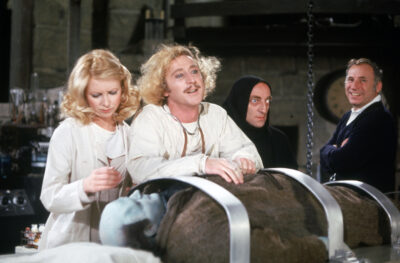
“A hugely enjoyable walk through Gene Wilder’s entire life” – The Broad Street Review
“Tender and eye-opening tribute.” – Jewish Film Institute
For much of cinema history, the sight of a big Z slashing across the screen promised the fictional adventures of a sword-wielding caped crusader, but starting in 1988, that big red Z started to stand for something else amongst discerning cinephiles, as real life heroes Nancy Gerstman and Emily Russo believed there was a better way forward for the films they loved. Starting Zeitgeist Films out of a small West Village apartment after working a variety of jobs in film distribution, the two have played an outsized role in shaping film culture in the decades since, taking a quality over quantity approach to making room in a crowded American theatrical marketplace for some of the most daring work from around the world. Limiting their acquisitions to a manageable slate of four to five releases a year where each one would receive their undivided attention, a necessity when championing artists such as Bruce Weber (“Let’s Get Lost”), Peter Greenaway (“The Draughtman’s Contract”), Derek Jarman (“Blue”) and Guy Maddin (“Cowards Bend at the Knee”) without deep pockets, the duo has not only had the foresight to see the enduring nature of the films themselves that they release, but the value of time in how much they put into each film and how it has afforded them the sustainability to keep going.
“We noticed that there were companies that started that spent a lot of money on films and would acquire a lot and those companies went out of business extremely quickly,” Gerstman said recently on the occasion of the company’s 35th anniversary. “And we wanted to stay in business and we were able to.”
Their latest milestone has led the Metrograph in New York to pay Zeitgeist a much-deserved month-long tribute with an in-theater 13-film retrospective, kicking off this Friday with Gerstman and Russo introducing a newly spiffed up 4K restoration of “Sophie Scholl: The Final Days,” Marc Rohemund’s unfortunately all-too-relevant WWII tale of the Munich University student who stood up against the infiltration of Nazi thought at school, and an additional 20 films being made available on the theater’s streaming service Metrograph-At-Home, tilting towards the visionary meta-fiction works from Yvonne Rainer, Atom Egoyan and Jennifer Baichwal that the distributor pushed long before such playful documentaries were in fashion. Guests of the series such as Raoul Peck (“Lumumba”), Christine Vachon (“Poison”) and Astra Taylor (“Examined Life”) reflect the range of Gerstman and Russo’s belief in taking advantage of the big screen’s ability to hold a variety of perspectives, yielding a catalog deep with films where the ordinary becomes extraordinary simply by telling stories that have been overlooked, particularly when it comes to the hidden histories of women and gay life in the 20th century.
With the machinery they’ve built over the years, Gerstman and Russo have celebrated the careers of free-thinking artists and activists as a home to documentary profiles of filmmakers such as Maya Deren (“In the Mirror of Maya Deren”) and Alice Guy Blache (“Be Natural”), photographers Cecil Beaton (“Love Cecil”) and Bill Cunningham (“Bill Cunningham: New York”) and intellectuals Noam Chomsky (“Manufacturing Consent”), Hannah Arendt (“Vita Activa”) and Slavoj Zizek (“The Pervert’s Guide to Ideology”) while helping launch so many others, picking up on the early promise in the work of Todd Haynes (“Dottie Got Spanked”), Laura Poitras (“The Oath”), Chaitanya Tamhane (“Court”), Talya Lavie (“Zero Motivation”), and Andrey Zvyagintsev (“Elena”). (Only they could arrange for a documentary to be made about the stop-motion animation maestros the Brothers Quay made by Christopher Nolan, whose first film “Following” they shepherded to theaters.)
As Gerstman and Russo readily acknowledge, the work has only gotten more difficult as time has gone on, but leaning on good taste and institutional knowledge, they have beaten the odds to become a pillar of arthouse cinema and in having such a hand in bringing important voices into those sacred spaces, it was truly an honor to get to speak to them on the eve of their retrospective at the Metrograph, which may be a short distance from their offices, but involves a journey that cuts across multiple countries and decades as they’ve brought global cinema to the city and beyond.
Click here to read the interview.
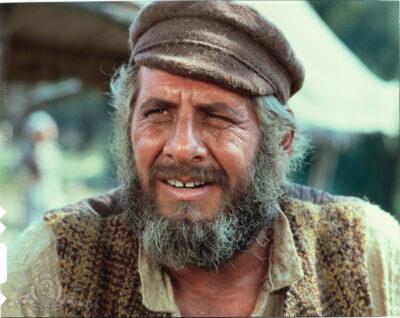
The passing of Sidney Poitier, regal, graceful giant of American cinema, rightly sparked a great deal of focus on the powerful pair of Poitier films released in 1967, GUESS WHO’S COMING TO DINNER and IN THE HEAT OF THE NIGHT (which we’ll be screening in October). Greg Laemmle wanted to put in a plug for his personal Poitier favorite, the film for which he won his first Oscar, LILIES OF THE FIELD, which Greg called “a beautiful meditation on what can happen when religion moves us toward a place of love and compassion and away from division.” People everywhere, including world leaders, were moved to pay tribute to Poitier, including Oscar-winning actress-filmmaker Halle Berry. She wrote a terrific remembrance in Variety, which we’ll excerpt and link to:
“I grew up idolizing Sidney Poitier.
“I was around 9 when he flickered into my world on a television replay of GUESS WHO’S COMING TO DINNER. I was a latchkey kid in Cleveland, daughter of a white, single mother and a Black father — whose union their parents had frowned upon. In the film, Sidney and his co-star, Katharine Houghton, play an interracial couple whose parents also struggle with their children’s relationship. There I sat in front of my mom’s old console, mesmerized, as I watched my family’s dynamic play out. For the first time in my childhood, I felt seen. Understood. Validated. The world already knew Sidney, who died last week at 94, as a formidable performer. But I first experienced him as a mirror.
“I watched that film over and over again, through my middle-school years and beyond. By then, my mother had moved our family from a Black enclave in Cleveland’s inner city to the suburbs, where I became one of a few Black students in a sea of Caucasian faces. I was a child who, like my parents’ interracial relationship, never quite fit in. In those years, it was rare to see Blacks in leading roles, much less have our narratives celebrated or even acknowledged. Cicely Tyson and Diana Ross were on the scene, as was the fresh memory of Dorothy Dandridge, the Black actress I idolized as much as I did Sidney. Back then, their mere presence was itself a form of protest. A challenge to the notion of whiteness as humanity’s high-water mark. Still, those images were scarce. As a child born to a white woman and a Black man, I felt alone and misunderstood. GUESS WHO’S COMING TO DINNER, as great art does, was an affirmation that I mattered. Also, it gave others a window into my reality, of what it felt like to navigate the world with both Black and white parents.
“Sidney’s impact on me did not end there. Over the years, I looked to him as a sterling example, as a template of manhood and all that is honorable. I was just 4 when my parents separated, when my father’s alcoholism upended our family. As imperfect as my dad was, as deep of a wedge as his fury drove between us, I loved him, missed him, longed to have him close. In my mind’s eye, and in my father’s absence, Sidney epitomized what a man should be: unflappable and courageous, eloquent and proud, charming and handsome. He even physically resembled my father. I wasn’t yet born in 1964 when Sidney became the first Black man to win an Academy Award for best actor for his role in “Lilies of the Field.” But years later, when I witnessed the moment in a Black History class, I could not look away. Sidney’s grace and poise, the intention with which he spoke, the dignified way he carried himself — all of it resonated with me. Though I hadn’t met him, and did not dream that I ever would, I felt strongly connected to him.”
